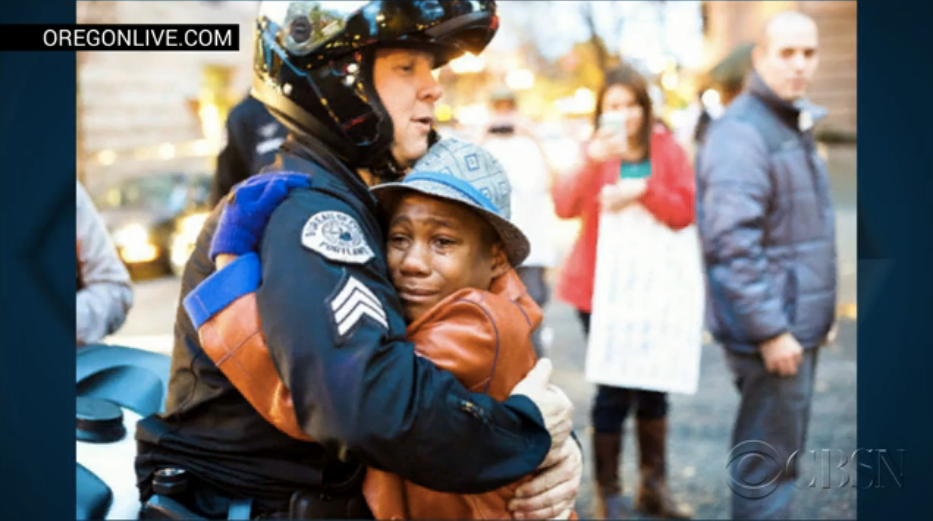
Let’s get one thing clear: No gadget will fix bad policing. There is no app to cure racism.
But putting body cameras on police officers is one hell of a start. It is one of the few areas where a new technology offers a clear, unambiguous social benefit.
Usually there are tradeoffs and unintended consequences to any new tech: We get smartphones, but they hurt our spines. We embrace social networks, but they contribute to the disintegration of real-world relationships. We love Amazon, but it makes it hard for local businesses to compete.
In this case, though, I don’t see any real downsides. If we put video cameras on police officers’ uniforms, we’ll get greater accountability, more data, and hopefully better policing. That’s why U.S. President Barack Obama’s plan, announced this week, to help equip police departments with body cameras is a great start. Every state and local government should embrace this initiative with all speed.
Will body cameras change police behavior? Probably not immediately, especially if grand juries continue to refuse to indict police officers, even in the face of overwhelming video evidence. But I believe the longterm effects will be profound.
Body cameras will help provide documentation and accountability. When things do go terribly wrong — as they did with Michael Brown, Eric Garner, Tamir Rice, Levar Jones, or John Crawford (WARNING: These links go to videos that contain disturbing images of actual people being shot and killed) — there will be additional video that can help grand juries (and regular juries) figure out what happened.
Body cameras will encourage more responsible law enforcement. Police already must know that any passerby with a cellphone could start recording their actions at any minute. But for some reason, this still often comes as a surprise to them, provoking some cops to anger. Putting a chest-mounted camera on an officer’s uniform will be a constant reminder that their actions are in the public eye. Maybe that will help remind them of their training, encouraging them to act like responsible law enforcement officers.
Body cameras will provide a rich source of video data for analysis. Advocates of open government data might use declassified police camera data to understand how police actually do their work. Anti-racism activists might be able to conduct statistical analysis of who, exactly, gets stopped and frisked in cities that still do that. Law and order types could use video evidence to show how police really are protecting us and stopping crimes. Police departments will be able to use video in their own evaluations and in training, helping improve the skills of their officers.
And body cameras will give the public some reassurance. Police officers are public employees, after all. A camera should be a reminder that the police work for us, and that we have a right to know what they are doing, particularly when things have gone wrong.
There is one potential downside, and that’s the specter of even-more-ubiquitous surveillance. But I think that’s a pretty mild drawback, given how widespread fixed surveillance cameras already are. In many ways a camera strapped to a uniformed officer’s chest is less of a privacy threat than a camera hidden on a high wall or next to a street light.
Given all these advantages, I think there’s no serious argument against body cameras.
For me, this is a particularly personal concern. I’m a white man, as you can tell by my author photo, but my children are black. My son, now eight years old, is just four years younger than Tamir Rice was when he was shot and killed by police officers in Cleveland — for playing with an Airsoft pistol, the kind of toy that is freely sold in Walmart and which generations of American boys have played with. In 10 years he will be the same age as Michael Brown was. In 14, he’ll be John Crawford’s age.
All of these individuals were shot by police who believed they were facing a terrifying threat, and who responded far too quickly to assess the situation accurately. Rice’s killer shot him about two seconds after getting out of the police car, sooner than he could have reasonably issued a warning or established the reality of the threat. We know this because it was caught on a surveillance video.
The heartbreaking fact is that for most police, as for most people in America, young black men are frightening figures, regardless of how they dress or act. Holding an Airsoft gun in a Walmart isn’t terrifying. Holding an Airsoft gun while being black is. We can’t change that through any technology. Sadly, my son will need to learn to live with that reality.
But we can provide greater accountability, and that will help keep people — especially those we equip with lethal weapons — from acting hastily out of fear, anger, and racism.
While videos may not lead to convictions — or even indictments — they’re a start. Maybe by the time my son is old enough for police to perceive him as a threat, there will be cameras helping to keep them honest, and him safe.
